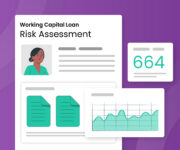Subvention lending is an arrangement between a lender, borrower and a third party that helps people access loans at favourable terms. It is mentioned in almost all budgets in India and has gained prominence as a financing strategy in real estate, automotive, and other high-value industries.
The government allocated Rs 203 crore for the interest subvention on working capital loans in 2020-21 and Rs 500 crore for 2021-22 to 2025-26.
Also, the PM-Vidyalaxmi Scheme provides financial support to meritorious students. It offers a 3% interest subvention on loans up to Rs 10 lakh for students with up to Rs 8 lakh annual family income.
These are two examples of various schemes offered by the government to promote financial inclusion and help the marginalised.
While the scheme aims to reduce the borrower’s financial burden and ensure liquidity, lenders must understand how it is instrumental in risk mitigation and return optimisation for lenders.
What is Subvention Lending?
Subvention lending is a tri-partite arrangement involving a third party apart from the borrower and the lender. The third participant in the arrangement could be the government, a builder for a real estate deal, or a manufacturer when it is a business loan.
As a financing strategy, it provides support to reduce the borrower’s loan burden for a specific period. Interest subsidies offer two main benefits for borrowers:
- They enhance access to credit and improve loan repayment rates, benefitting the lender and the borrower.
- Subsidised lending for crop or home loans reduces dependence on informal credit sources, promotes financial inclusion, alleviates poverty, and fosters socio-economic equality.
Notably, subvention financial aid, provided by the government, is used to offset loan interest; the government contributes to cover some of the interest. Typically, the government offers subsidies for various loans, such as crop, working capital, and home loans. It can be in the following forms:
- Interest subvention: The government facilitates loans at lower interest rates or other benefits.
- Subvention on EMIs: The government pays some of the borrower’s EMIs, helping the buyer pay less upfront.
Other examples of subvention lending schemes in India are:
- Interest Subvention for Farmers
The government provides a discount on interest for short-term crop loans to discourage distressed sales of produce by farmers and to encourage them to store their produce in warehouses against warehouse receipts.
- Interest Subvention for MSMEs
Under the Interest Subvention Scheme for MSMEs, scheduled commercial and cooperative banks are eligible lending institutions.
During the scheme’s active period, eligible firms can receive an interest relief of two per cent per annum on their outstanding fresh/incremental term loans or working capital loans.
Role of Subvention Lending in Minimising Risk and Maximising Returns
All lenders strive to reduce risk through various measures, such as credit assessment, a stringent onboarding process, default management, and more. Subvention helps lenders mitigate risk and enhance profitability in several ways, such as:
1. Lower Default Risk
A third party (the developer or government) provides financial support to cover interest payments or EMIs during the subvention period. This aid reduces the borrower’s immediate financial burden, lowering the risk of default.
2. Short-term Security
Lenders receive assured payments from the government for some time, which provides short-term security to the lender, offers cash flow stability and reduces the risk of non-performing assets.
3. Improved Borrower Engagement
Borrowers benefit from lower initial costs and feel valued when they receive financial aid. This fosters trust between them and the lenders, and they are more inclined to continue with repayments, even after the subvention period ends.
4. Higher Collateral Value
Subvention schemes for real estate help maintain or improve property values due to developer involvement, ensuring that the lender’s collateral holds its value. These schemes help preserve the loan-to-value (LTV) ratio as developers often guarantee buybacks or maintain property prices.
Higher collateral value reduces potential losses for lenders if the borrower defaults.
5. Wider Customer Base
Subvention makes loans more attractive for borrowers by reducing the initial cost, attracting first-time borrowers and those who may have otherwise hesitated due to the high interest burden.
Lenders can maximise returns with an increase in the loan and reduce individual risk through diversification.
6. Competitive Edge
Subvention lending provides lenders with a competitive edge when offering these schemes. They can capture a bigger market with attractive lending schemes and options and build stronger relationships with their customers.
7. Reduced Recovery Burden
Partial funding by the government or manufacturers lowers early-stage defaults, ensuring better repayment later. Subvention lending reduces lenders’ collection and legal cost burdens throughout the lending lifecycle, enhancing profitability.
8. Cross-selling Opportunities
Subvention lending allows financial institutions to up-sell and cross-sell various products, such as investment schemes, insurance, top-up loans, and more, helping them develop additional revenue streams.
To Sum It Up
Subvention lending is a valuable financial strategy that benefits lenders and borrowers and facilitates economic development and stability. Borrowers gain from favourable terms and improved access to credit.
Plus, lower default rates and collection expenses, improved customer base, gaining competitive advantage, and more help lenders maximise their return and minimise risk.
Lenders can also use artificial intelligence (AI) and machine learning to improve risk management and profitability. Finezza offers a bouquet of products that leverage emerging technology to help lenders improve their operations.
Some of the solutions are as follows:
- A flexible and agile Loan Management System with features like NPA management and collections management for improved profitability
- The AI-powered Credit Bureau Data Analysis helps lenders make risk-free decisions.
- A robust Loan Origination System with superior threat detection, 360-degree customer profile assessment, credit assessment tools and more to help lenders balance risk and returns.
Get in touch with us for a free demo.




Leave a Reply